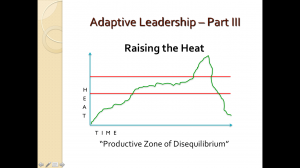I kind of forgot to have kids. When my body told me with finality that I was never going to be a mom, I was surprised by a rush of regret. Coincidentally, I read Louanne Brizendine’s book, The Female Brain.* It was a relief to be told that the tumult in my mind wasn’t my intellectual self or even my emotional self. It was my hormonal self.
Brizendine, a neuropsychiatrist on the faculty of the University of California San Francisco Medical Center, tracks the waves of hormones that we produce — from birth through childhood, teen years, adulthood, into aging — and the behavior patterns that result. Females, she writes, have always needed to be highly tuned to the feelings and actions of others. Carrying and raising a baby was dangerous in early social groups. A woman had to insure that she and her children were safe. Her hormones hard-wired her to prioritize relationships over wants.
An Australian feminist I met while teaching at Harvard’s Kennedy School of Government took me to task for being seduced by Brizendine’s theories. She gave me a new book to read, Delusions of Gender: The Real Science Behind Sex Differences, by cognitive neuroscientist Cordelia Fine.** Fine sets out to debunk Brizendine’s work, which she calls “neurosexism.”
Fine is pushing back against the idea that our brains are hard-wired for male or female behaviors. Her premise is that our culture permeates our minds to create behavior, and that behavior then becomes part of the social context. She doesn’t deny that there are sex differences in the brain. She points out, though, that the popular use of neuroscience to explain gender inequality simply reinforces old-fashioned beliefs about the position of men and women in society.
She begins with a litany of quotes: “Women are incapable of penetrating to truths that are slightly difficult to discover,” Nicholas Malebranche, 17th century French philosopher; “The female brain is predominantly hard-wired for empathy; the male brain is predominantly wired for understanding and building systems,” Simon Baron-Cohen, 21st century Cambridge University psychologist. Not very different from the statement of former Harvard president Lawrence Summers that women can’t succeed in math careers because they are biologically less capable than men.
She describes a set of “stereotype threat” experiments. When women subjects were presented with subtle information that they weren’t as good at math as men, they performed more poorly than men on math tests. When the subjects were told the opposite, they exceeded male performance. “Having seen what effect on career interests a simple, brief manipulation in the lab can have, one can’t help wonder at the cumulative influence of…life,” she writes.
Fine takes on the Catch-22 that women in leadership roles endure. She notes that Hilary Clinton was described in 2006 as “too angry to be elected president.” This handcuffed her, as Maureen Down wrote in the New York Times: “If she doesn’t speak out strongly, she’s timid and girlie. If she does, she’s a witch and a shrew.” Sending out resumes for stereotypically male jobs, experimenters found that male candidates were preferred no matter what their qualifications. The female candidates were considered less qualified for the job, even if on paper they were identical. If a candidate was perceived to be a mother, the discrimination was even stronger.
A large portion of her book examines various experiments which “proved” that male brains are spatial and systems oriented, while female brains are geared toward feelings. One by one, she reveals how flaws in the research were caused by subconscious bias. She posits that neuroscientists are “unwittingly projecting assumptions about gender onto the vast unknown that is the brain.”
The most intriguing section was about how children acquire their beliefs about gender roles. Even in the womb, a fetus receives gendered information: a mother speaks to her unborn daughter with a softer tone of voice and gentler vocabulary than to a son. Infants see people around them performing gendered activities. Toddlers are assaulted with advertising that is highly gendered creating the “pink princess” phenomenon. Even children’s literature, which should have a higher standard, favors boys’ adventures over girls’, mothers who are at home wearing an apron, and fathers who bring home the bacon.
Fine ends with a chapter on the plasticity of the brain. Biology does not beget behavior; it’s the other way around. She writes, “The circuits of the brain are a product of your physical, social and cultural environment, as well as your behavior and thoughts. What we experience and do creates neural activity that can alter the brain.” And not just the brain: our genes and hormones are affected, too. What we do then touches others’ actions and attitudes. The cycle is reinforced — and pretty soon we are said to be hard-wired.
What I’m thinking is this: we are in the midst of a tumultuous turning point in society’s beliefs about women’s capabilities, desires, and roles. We aren’t hard-wired to be from Venus while men are from Mars. “Time’s Up” isn’t just about calling out sexual harassment, it’s about claiming our equality. Women’s marches all over the country aren’t just about protesting our current administration. They are about saying, “We are powerful, too!” And the new push for women to storm the male political bastion isn’t just so we can affect legislation. It’s to say that women are, and always have been, exceptionally capable of running the show.
* Brizendine, Louanne, THE FEMALE BRAIN (New York: Three Rivers Press, 2006).
** Fine, Cordelia, DELUSIONS OF GENDER: THE REAL SCIENCE BEHIND SEX DIFFERENCES (London: Icon Books, 2010).


